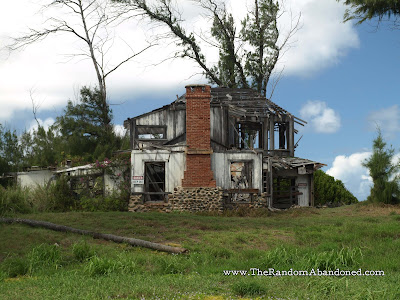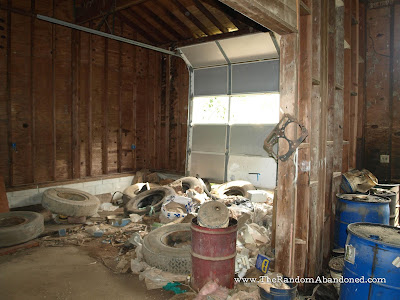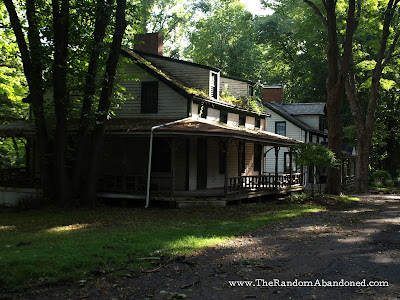This blog is about what man has left behind, and for the longest time, that was just buildings and other tangible items. The internet is littered with abandoned material as well. YouTube channels, blogs, websites, and more.
Pop-Spot is one of those YouTube channels that has been left behind for over six years. It was a channel that I am still subscribed to to this very day. It featured fun “popped” videos about viral videos, Getting Lost on the Internet (one of my personal favorites), Slo-As-A-MoFo, and more.
Without notice, warning, or explanation, it all stopped. What happened to it? Why did the channel, their Facebook, and their Twitter account all go silent at once? Let’s find out.
There was nothing on the internet about why this channel stopped making content. While it didn’t have millions of subscribers, it seemed to have a growing fan base and a steady amount of views per video. I did some digging and discovered in a
PR News Article that the channel was created by an LA based company called Eyeboogie, which was responsible for VH1’s Pop-Up Video. Pop-Up Video was a series where info bubbles would “pop up” on screen on music videos to give you interesting facts.
I figured I would get right to the source and email Eyeboogie with some questions, and wait. This was the first time I was featuring an abandoned YouTube channel on this blog, so I didn’t know what to expect.
A short time later, someone named Woody Thompson got back to me: the CEO of Eyeboogie. I was thrilled, and he was interested in an interview. The following information came straight from him, and is used with his permission. It has been edited for flow, but no information has been changed.
Creation of Pop-Spot
In 2012,
YouTube started an initiative to allow “professional” content creators to populate the site with “professionally” produced content. Pop-Spot was one of the 120 original content creators who pitched concepts and were awarded one of YouTube’s first channels for this initiative. They were asked to put together a programming slate for 27 hours of content over the next year, and were to be fully funded by YouTube.
Pop Spot was not the original pitch, but after YouTube awarded the channels, Pop-Spot realized they were just one of 20 or more content creators who were in the pop culture space, and they did not have an existing website that was already producing content, like Young Hollywood or Vice. So, they decided to focus on what they had a reputation for doing with VH1’s Pop-Up Video: take already popular content, research it, and add context to it. “We wanted to become the place where viral videos went to be investigated and ‘re-mixed.’ That was what we thought would be our difference maker between all the other pop culture content channels,” Thompson wrote.
The Early Days
The channel originally started with videos that were under 10 seconds. That changed as time went on.
We experimented with every type of content to try to lure audiences and not have to pay an influencer to make content for us or pay to ‘market’ our content. We tried ‘bite-sized’ content to try to get multiple plays and build our clicks, plays and shares which were the critical criteria for getting re-funded at the end of the year.
They didn’t have a solid game plan when they started the channel. The initial thought would be that Search Engine Optimization (SEO) would drive viewers to the channel so they could re-watch viral videos with Pop-Spot’s twist.
The original team responsible for the channel was about five full-time people. Everyone did everything: camera work, write, produce, and direct. “It was mostly editing where we invested,” Woody shared. “We went to MIT to sponsor a viral video conference and then went to Vid Con to shoot Slo-Mo videos of influencers.”
Downfall and Death
It took four months for the team to figure out where they wanted the channel to go, and eight months to realize it was not working. Despite the investments and work that Eyeboogie did, they were not driving reliable traffic. Woody claims a big part was the lack of personality.
We never had a personality we could build shows around - it was all concept based and nothing on [YouTube] works on concept alone. You needed a personality or 3 to drive an audience... We just never played the game that the other savvier channel did by hiring big established [YouTube] Stars to partner or make content for them.
YouTube was set to make its renewal decision ten months in. By then, it was too late. The day YouTube cut its funding was the day the channel stopped. On December 14, 2012, the last video was uploaded: Machete to Christmas ornaments - Slow As A MoFo.
Aftermath
Pop-Spot was done, but Eyeboogie lived on continuing with other projects. Today, it works on content for the Travel Channel, HGTV, and more. Woody Thompson is also perusing other “non-content creative ventures.” When I asked him about why it stopped, he said there was no reason to continue spending money on a channel YouTube wouldn’t support. “We should have sought funding from outside sources to keep going in hind site, because we were given a gift and we just needed more time and a better gameplan,” Woody later said.
There is more to the abandoned life beyond what we can touch. The internet is a treasure chest of information and death. I’ll bring you the information, by digging up the death. Thanks for stopping by.












































































